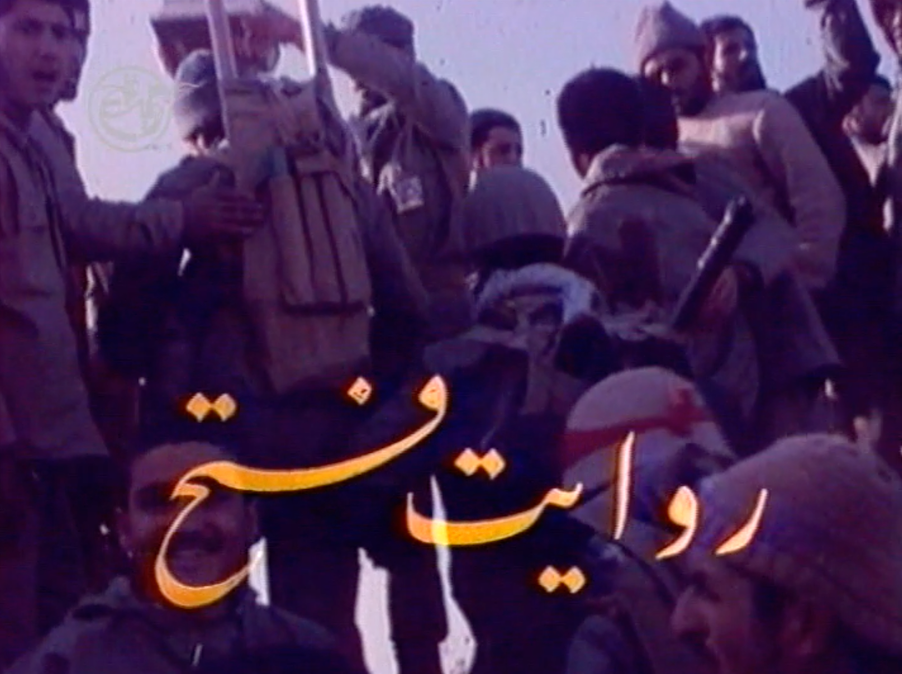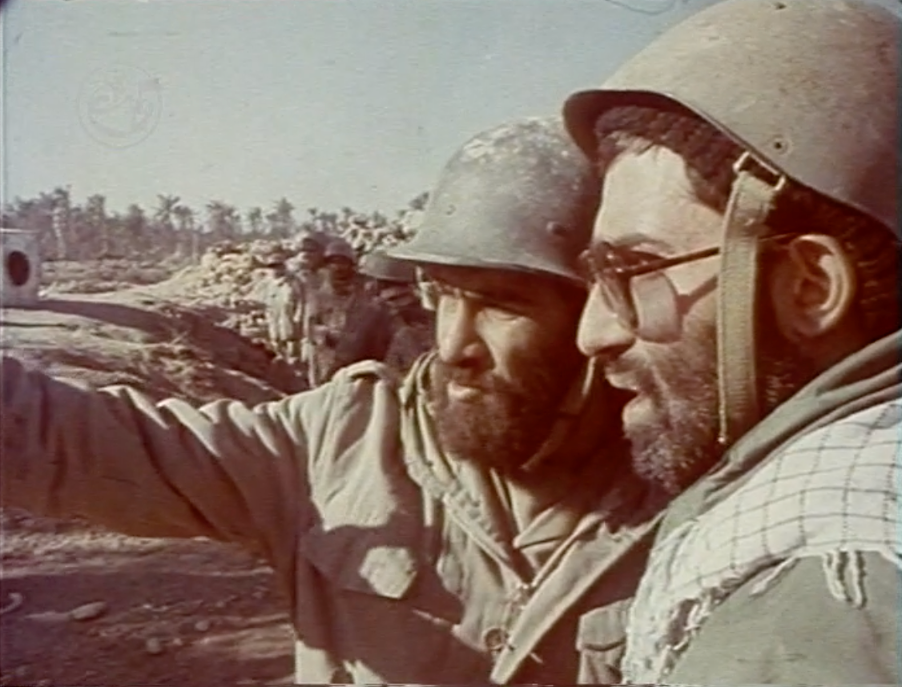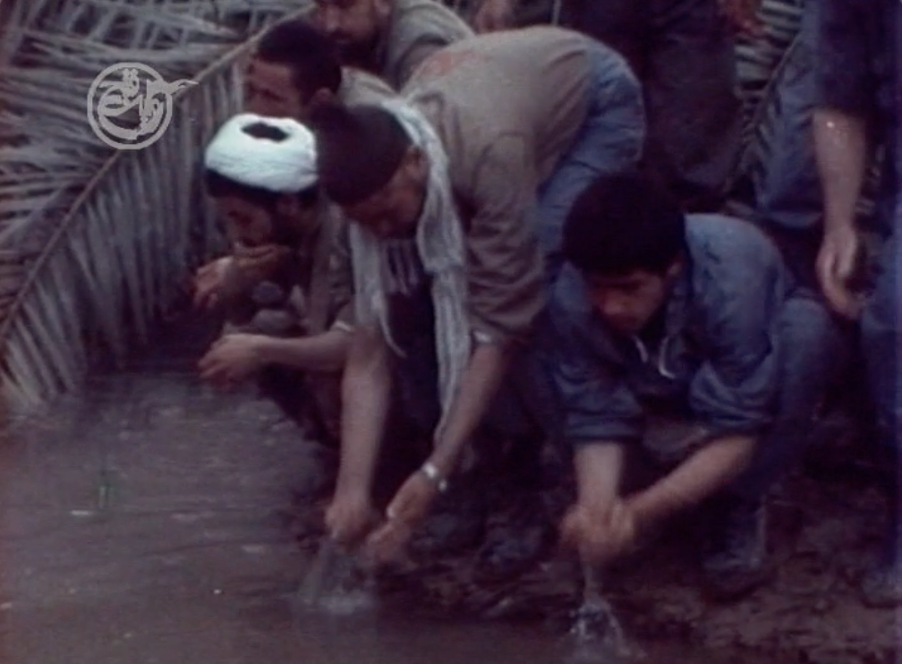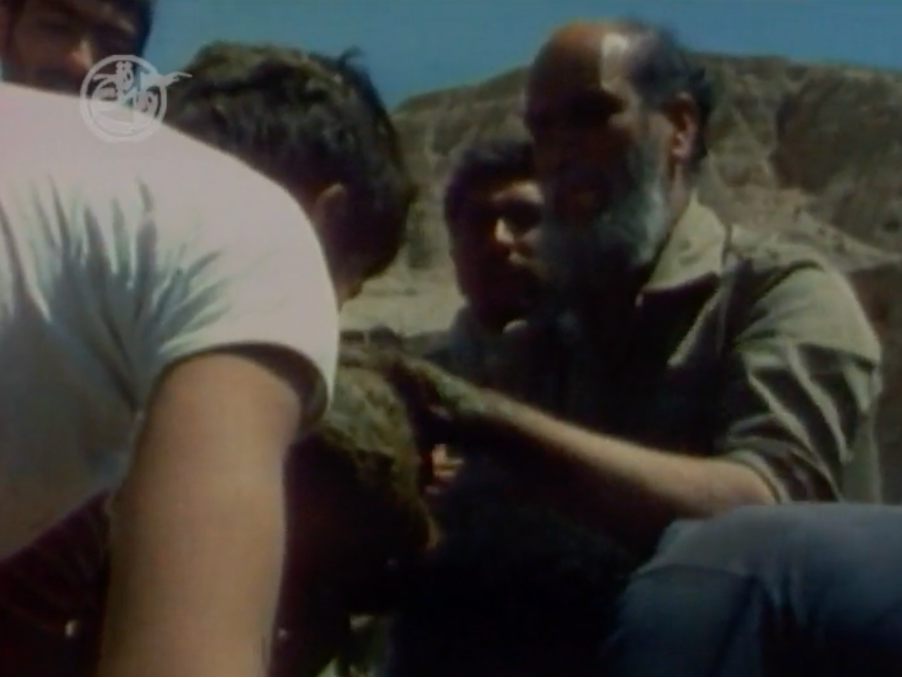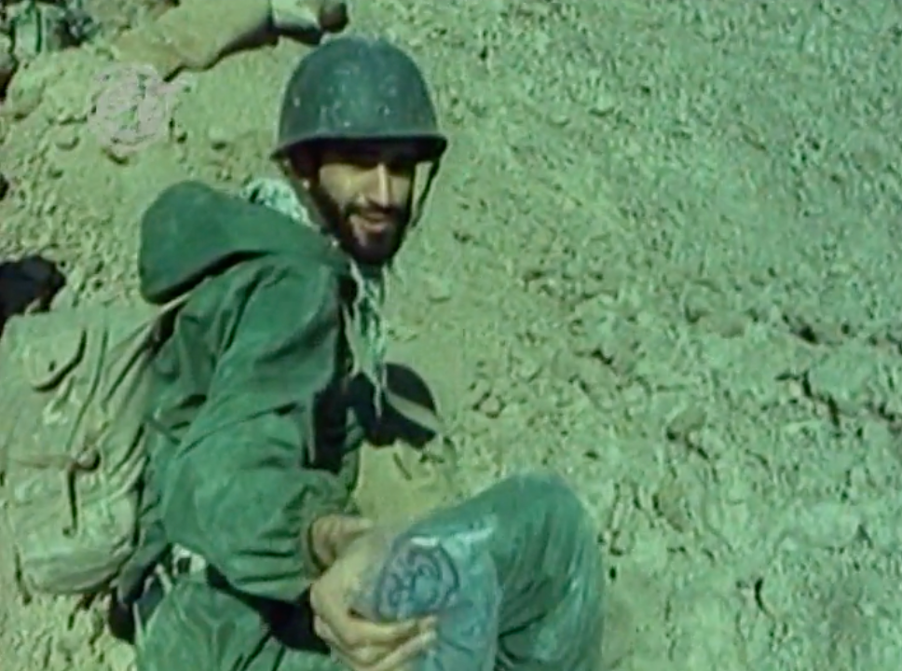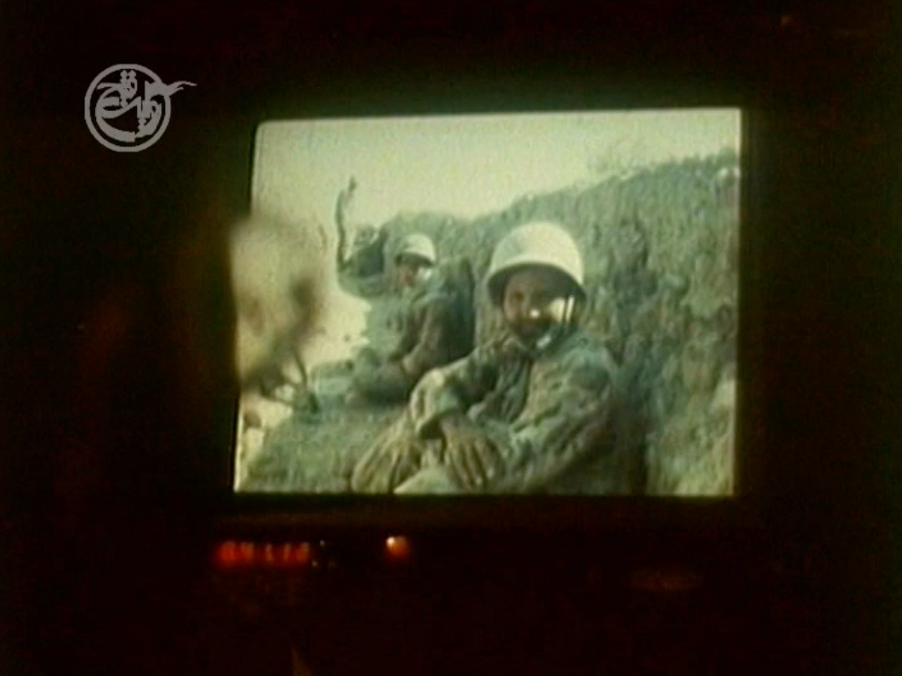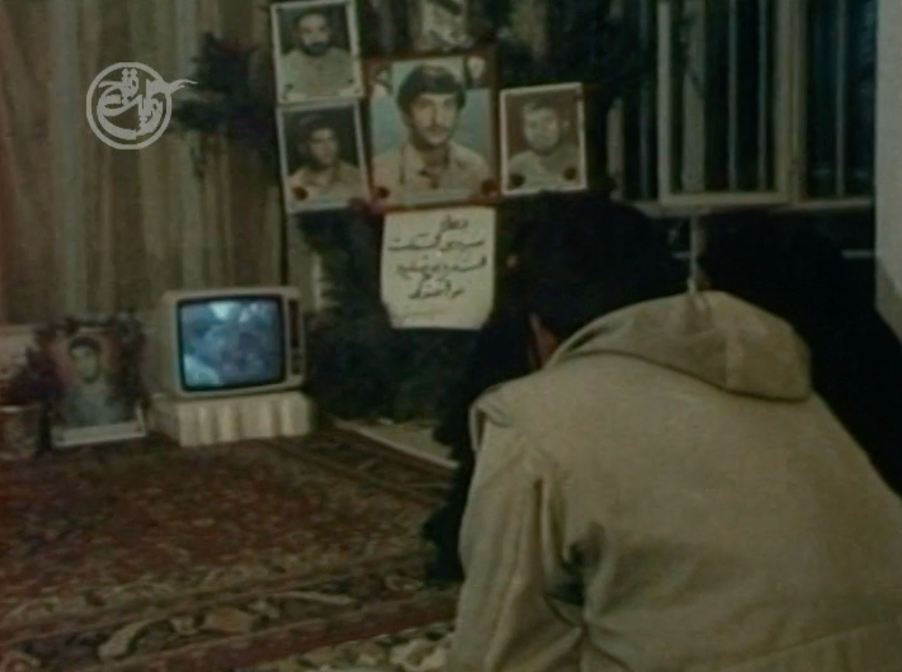Illuminationist Cinema: How Islamic Mysticism Inspired Morteza Avini’s Sacred Defence Documentaries of the Iran-Iraq War and His Attempt at Constructing a Film Theory
Kaveh Abbasian
[PDF]
Abstract
“Sacred Defence cinema” is the official title given to Iranian pro-establishment war films concerning mainly the Iran-Iraq War (1980-1988). The most prominent figure of this cinema who both made films and wrote about them was the documentary filmmaker Morteza Avini. In his search for a new Islamic-inspired cinematic language, Avini argued that Islamic mysticism and revolutionary Shi’ism could lead to a cinema which he called “Illuminationist cinema”. He used this term mainly in order to reflect on the filmmaking techniques he developed and used during the making of his own documentaries, but also proposed it as a filmmaking method to be adopted by other Islamic filmmakers. Avini’s premature death in 1993 put a stop to his theorisation of the Illuminationist cinema; however, his films and his writings continue to inspire new generations of Iranian propaganda filmmakers. In this article, by analysing Avini’s films and writings, I lay out a definition of his Illuminationist cinema and explain what aspects of Islamic mysticism and revolutionary Shi’ism inspired which filmmaking methods he developed and theorised. I also show how Avini’s films and writings played a crucial role in shaping the propaganda language of the Islamic Republic both during and after the war.
Article
In 1986, six years after the start of the Iran-Iraq War (1980-1988), a television documentary series started to be aired on the Iranian national TV that went on to have an immense influence on the propaganda aesthetics and audiovisual language of the Islamic Republic’s official cinema and television. The series was titled Revayat-e Fath (Chronicle of Triumph,1986-1988) and was aired on a weekly basis from 1986 to 1988. The sixty-three-episode series was directed, written, narrated and edited by the young Morteza Avini (1947-1993), who led a group of dedicated Islamic filmmakers operating on the frontlines of the Iran-Iraq War and in Iranian cities and villages.
Chronicle of Triumph can be understood as a continuation of the state-sanctioned “Islamic cinema” which officially started after the 1979 Revolution and eventually led, during the war, to the formation of Iranian war cinema or, as it is officially referred to inside Iran, the “Sacred Defence cinema”. Avini’s camera and his voice narrating the series took the war and its ideology to the remotest corners of Iran. He used his literary skills to write the mystic and ideological narration of the series. In his voiceovers, he depicted the war as the last battle of history between Hagh (“truth”) and Baatel (“falsehood”), where the fate of the world was to be determined. In order to do this, Avini incorporated ideological elements from Shi’i Islam and certain branches of Islamic mysticism.
Figure 1: Iranian volunteer fighters kissing the Quran before an operation; the title reads: “Chronicle of Triumph”. Revayat-e Fath (Chronicle of Triumph). Directed by Morteza Avini, Jihad Television, 1986-1988. Screenshot.
As Roxanne Varzi has indicated in her book Warring Souls: Youth, Media, and Martyrdom in Post-revolution Iran, as the longest running television series about the war Chronicle of Triumph “was the lens through which most of Iran viewed the war and its aftermath” (76). The weekly broadcast of the series offered a collective experience to its audience leading them to feel that they were part of the same struggle for the same cause and against a common enemy. In his book Surviving Images: Cinema, War, and Cultural Memory in the Middle East, Kamran Rastegar considers Avini’s works to remain “the paradigmatic example of the marriage of documentary technique and ideological aims in line with state policy, and definitive of ‘sacred defence’ culture in its highly committed phase” (213).
Morteza Avini is largely considered to be the main theorist of the Sacred Defence cinema and a leading figure among its founders. Although he had started to develop his film theory and techniques in his earlier films, during the making of Chronicle of Triumph he reached a relative maturity. A large body of his theoretical writings about film and cinema, which are collected under the title of Ayene-ye Jadoo (Magic Mirror), are written in reference to this documentary series. It was through these writings as well as his verbal and practical guidance to his team that he attempted to form the concept of “Illuminationist cinema”.
Figure 2: Morteza Avini (right) at work during the Iran-Iraq War. Chronicle of Triumph. Screenshot.
In attempting to theorise a new form of cinema, Avini was, in fact, following in the footsteps of a number of Islamic Iranian thinkers who aimed to create an authentic Eastern/Islamic response to what they considered to be an onslaught of “the West”. Twenty-four years before Avini’s Chronicle of Triumph, in 1962, Jalal al-Ahmad (1923-1969), had clandestinely published a booklet titled Gharbzadegi [Occidentosis: A Plague from the West]that went on to be one of the most influential texts of this campaign of “authenticity” and greatly influenced Avini too. In this booklet al-Ahmad declared that Iran and Islam were under a heavy attack from “the West” and called for unity around an “Iranian and Islamic identity”. He also put forward a solution for the problem of “dependency” and that was for the people of “the East” to take control of the “Western machines” (as opposed to being controlled by them) and for specialist professionals and technicians to be produced inside the country (al-Ahmad 79). It was this approach that inspired Avini to argue that, although cinema is a “Western technology”, it should be adopted to reflect the needs of the “Islamic Revolution” (“Sinama” 122). However, he warned that this transition, especially when it comes to cinema, would not be as easy as it sounds. Taking inspiration and referring to Marshall McLuhan’s theory of “the medium is the message”, Avini argued that cinema and television were Western media that brought their own Western content/message with them. These media, he cried, had taken humanity away from its fetrat (fitra, fitrah, an Islamic term meaning innate nature) (“Sinama”). He even argued that cinema by nature was closer to “infidelity” and “paganism” than to Islam, and he criticised other Islamic artists and thinkers who in his words thought that “cinema and television were empty vessels that accepted any kind of content” (“Sinama” 122; my trans.). He pointed out that, despite the fact that cinema and television had “imposed themselves on us”, with the revolution “we had to pull out the fangs of this snake, though in this task, complete success was impossible” (120, 139; my trans.). The history of Iranian cinema and television from the days leading to the revolution until the day that the first episode of Chronicle of Triumph was broadcast in 1986 is a history dominated by this idea of “pulling out the fangs of the snake”, or in other words of purifying and Islamising Iranian cinema. Morteza Avini and especially his Chronicle of Triumph played a crucial role in this wide-scale project of Islamisation, so much so that episodes of the series are still aired on Iranian national television and numerous publications and seminars are dedicated to the commemoration of the man who theorised Illuminationist cinema.
Avini’s death, along with those of seven other members of the Chronicle of Triumph group while filming, all officially considered “martyrs” in Iran, has created an air of holiness around them.[1] Islamic critics consider not only Avini but also his television programmes to be of high spiritual quality. The sensitivity surrounding Avini has so far prevented serious professional and scholarly study of his work to take place inside Iran. Despite the series’ unique style and its legacy in Iranian Sacred Defence cinema and propaganda documentary filmmaking, Chronicle of Triumph has not been sufficiently studied and remains relatively unknown outside of Iran. This lack of academic study is, to a certain degree, extended to Iranian Sacred Defence cinema in general; while the cinema of post-revolution-Iran is internationally acknowledged and academically studied, the non-Iranian world knows little to nothing about Iranian Sacred Defence cinema. Heavily funded by the state and widely domestically, this is a film movement described by Hamid Dabashi as “the public secret of Iranian cinema”(vi).
The Influence of Mysticism
Avini belonged to that line of Iranian revolutionaries who were dedicated followers of the charismatic cleric Ruhollah Khomeini. As well as being an Islamic revolutionary, he shared with Khomeini his deep interest in Islamic mysticism. Avini included various mystic and Sufi arguments in the narration for his documentaries; for example, in an episode of Chronicle of Triumph called “Shab-e Ashurai” (“Ashura-like Night”), in a scene of fighters preparing for a military operation, his narration employs the doctrine of Unity of Existence (vahdat-e vojood), a doctrine developed by the likes of Ibn Arabi (1165-1240) and Al-Ghazali (1053-1111) which describes all existence as a reflection of the one central existence that is God: there is nothing but God, which is the belief that inspired Mansur Al-Hallaj’s (858-922) famous declaration “I am the Truth” (Ana l-Hagh), with Hagh being one of God’s many names. Referring to the fighters, Avini’s narration on the scene states:
Now they have come so simple and humble, unpretentious and sincere, connected with water, tree, sky, land, rain and the birds. And you, who has gone astray from the stifling land of arrogance and self-obsession and suddenly found yourself among these obedient followers of God, start feeling that thanks to them, you are also connected with everything: water, tree, sky, land, rain, the birds and other human beings. And you think that there is nothing left between you and the great creator, and you turn into a permanent prayer. [...] You yourself, the one who you call “I” [...] there is no “I” anymore. “I” dies, and all join together. (“Shab-e Ashurai”; my trans.)
Figure 3: Iranian volunteer fighters perform ablution while Avini’s narration presents the war fronts as places of high spiritual quality in “Shab-e Ashurai” (“Ashura-like Night”). Chronicle of Triumph. Screenshot.
Avini pictured the journey to the war front as a spiritual journey through which one loses one’s ego and becomes united with God. He encouraged his audience to go through this experience by signing up as volunteer fighters. This approach is also visible in the lack of credits at the end of each episode. None of the crew members, including Avini himself, was ever named during the war unless they became “martyrs”. This was perhaps due to Avini’s theory inspired by mysticism that in order to show “truth” one must get rid of one’s ego and surpass oneself.
The most important line of mysticism, influencing both Khomeini and Avini, can be traced back to the Persian philosopher Shahab al-Din Suhrawardi (1154-1191). He called his philosophy Hikmat al-Ishragh (“Philosophy of Illumination”), in which he developed the idea of a centralised source of wisdom. He based his philosophy on a complex emanationist cosmology, in which all creation is a successive outflow of noor (“light”) from the original Noor al-anvar (“light of lights”) (Marcotte). The influence of Suhrawardi was such that Avini even named his method “Illuminationist filmmaking” and argued for an Illuminationist cinema. In his narrations for Chronicle of Triumph, he presented the journey of Iranian fighters from their hometowns to the war front, as well as their eventual “martyrdom”, as an eternal move towards the “truth”, or Noor al-anvar (“light of lights”) and, essentially, God. Another important aspect of Suhrawardi’s philosophy of Illumination was the concept of velayat (“guardianship”). Velayat is directly related to the Islamic Shi’i doctrine of Emamat (“Imamate”). In Twelver Shi’i Islam the divine wisdom, which was a characteristic of Muhammad the prophet, did not stop with his death but was successively inherited by twelve of his descendants: the divinely appointed Imams. Twelver Shi’as believe their twelfth and final Imam, Muhammad ibn Hasan al-Mahdi, who was born in 869 and apparently disappeared at the age of five, to be currently alive but hidden from our eyes, hence his title: Imam of the Time. They believe him to be the ultimate saviour of humankind who is going to emerge, lead a revolution, and bring peace and justice to the world.
Figure 4: Iranian volunteer fighters perform the wedding ritual of putting henna on one’s head, before a military operation and possible “martyrdom”. “Hanabandan” (“Henna Ceremony”). Chronicle of Triumph. Screenshot.
In Iranian mysticism, the divine wisdom lost its limitation to the Imams and the concept of velayat (“guardianship”)was developed. In this understanding, vali (“guardian”)was a complete man who can exist at any period of time because God’s grace has no limits and he wouldn’t cut his connection with the people. Suhrawardi was a great advocate of this theory and believed that velayat (“guardianship”) was the continuation of nabovvat (“prophecy”). Khomeini took the arguably purely mystic concept of Velayat and came up with the political theory of velayat-e faghih (“guardianship of the jurist”) (Ajoudani). In 1970, through thirteen lectures that he gave while in exile in Najaf, Iraq, Khomeini advocated direct hierocratic rule on behalf of the Hidden Imam and argued that a faghih (“jurist”) should not be just one official among other officials, but a supreme leader, overseer, judge and guardian. With this, Khomeini introduced the idea of a representative for the Hidden Imam who is responsible for the spiritual as well as political leadership of the community. By the time the revolution became successful, Khomeini’s followers had no doubt about who was to be their vali-ye faghih (“jurist guardian”). Avini took the doctrine of velayat-e faghih with all its political and mystical connotations and applied it to his Chronicle of Triumph. This was immediately recognisable in his narrations:
There, in the Western land, there is a hell made of [earthly activities and emotions of] eating and sleeping and anger and lust. And here, under the same sky, these mountains and cliffs and plains are sacred stepping grounds of an ummah [“Islamic community”] whose mirror of fetrat [“innate nature”] has been shined on by the light of the guardianship of the family of Muhammad, that has arrived from centuries of history. In the radiance of this light, which is the Noor al-anvar of hagh [“God’s light of lights”], this ummah has once again found the divine way. (“Hanabandan”; my trans.)
What Is Illuminationist Cinema?
Although in his narration he could easily employ mystical doctrines and terminologies, when it came to filmmaking techniques and the structure of his films, it was not very clear how Avini intended to employ mysticism. His early death in 1993 didn’t allow him to elaborate in detail upon the matter, which meant that his followers were left guessing about the nature of Illuminationist cinema, as Mostafa Dalai, a cameraman for Chronicle of Triumph, makes clear: “Morteza proposed this term [Illumination] once or twice in some of his books, but he didn’t find the opportunity to talk even to us about the Illuminationist documentary” (475; my trans.) . This lack of detailed explanation did not stop them, however, from repeating and advocating the term. Some even tried to complete Avini’s unfinished job and explain the term on his behalf. The most notable example is Mohammad Madadpour. In two of his books, Seyr va Suluk-e Sinamayi (Cinematic Spiritual Journey) and Sinamaye Eshraghi (lluminationist Cinema), he criticises existing film cultures and especially films that claim to be spiritual, arguing instead for a truly mystical method of filmmaking. Like Avini, he condemns war films such as Kiyanoush Ayari’s Abadani-ha (The Abadanis,1994) for not reflecting “the sacred truth of jihad” because he claims the filmmakers “allowed their subjectivity to take control of the film” (Seyr va 108; my trans.). Furthermore, like Avini he praises “sacred defence” films such as Ebrahim Hatamikia’s Deedeh-ban (The Scout,1990),in which, according to his argument, “the filmmaker attempts to elevate himself to the level of spiritual purity [esghat-e ezafat], to surpass his subjectivity, and to put himself, like a mirror, in front of whatever there is and to give his heart over to the exploration of truth” (Seyr va 109; my trans.). Following Avini, Madadpour argues that in order to reflect “the truth”, the filmmaker must first cleanse himself from sensuality (nafsaniyat) and subjectivity. He considers this to be the “Illuminationist way” of which Avini spoke, and which was the method for making Chronicle of Triumph. Through this close proximity to the “holy truth”, he notes, cinema’s veil of technique and technology would be removed, and the truth of existence in all its manifestations would be “illuminated” (Seyr va).
Madadpour bases his argument on Avini’s writings and films, proposing several characteristics for Illuminationist cinema: matching the reality that is the “manifestation of divine kindness”; avoiding the “alien” and “non-religious” expertise that is taught at film schools; accepting “martyrdom” and war as the most vital issue for Islam; simplicity; considering the “divine inner nature” [fetrat-e elahi] of the audience; using narration to reveal the spiritual aspects of the image; avoiding non-spiritual propaganda, for example, boasting about weapons; avoiding fake attractions including dominant music; and expressing the “truth” (Sinama-ye). Madadpour’s insistence on the concept of “truth” is based on Avini’s own writings either in the form of narration for his films or in his theoretical writings. Like many other documentary filmmakers since Dziga Vertov’s Kino-pravda (1922-1925), Avini too was concerned with “truth”; however, for him this “truth” was represented in the “Guardian” (Khomeini). He distinguished “truth” from reality and judged the “truthfulness” of events by their proximity to the “line of the Guardian”. Anything that didn’t fit this idea of “truth” had to be removed during the edit. For example, Avini explains what he would do with an interview with a mother who turned out to be against the dispatch of her son to the war front: “we would never keep such a scene in our films, because it does not correspond with the truth of our society” (“Negahi” 205-06; my trans.).
While Avini didn’t explain much about Illuminationist cinema, Madadpour’s explanation remained vague and confined to war films. Although both insisted that, in order to reflect this “truth”, the “veil of technique” had to be taken down and the magic of cinema must be revealed, they did not go into the details of how exactly this must be done. In other words, their argument for an Illuminationist cinema against the established “magical cinema” has never been explained in regard to specific filmmaking techniques. A careful study of the shooting and editing techniques used in Chronicle of Triumph combined with an analysis of some of Avini’s writings and interviews can provide us with a better understanding of Avini’s unfinished project.
Shooting Techniques
Early on, Chronicle of Triumph as well as all other documentaries made by Avini were shot on 16mm film, but from 1987, when the front moved to Iraqi Kurdistan, they started using video cameras. Avini noted that the new conditions of the war required his crew to go on long treks in snowy mountains, crossing wide rivers, staying in a state of constant alert while consistently moving for up to one and a half months; all of this was not possible whilst also carrying large and heavy Eclair cameras and Nagra audio recorders. Such necessities, he pointed out, made them put these technologies aside and take up handycams (“Yek Tajrobe-ye”). According to Avini, his crew ranged between forty and fifty-three members (“Yek Tajrobe-ye”). These members were trained not only in filmmaking techniques, but also in revolutionary Shi’i ideology. Avini insisted that if not ideologically motivated and trained, the crew would not see the divine “truth” of the war and would end up making films about the dark reality of it, as per films like Amir Naderi’s banned documentary Josteju II (Search II, 1981) (“Negahi”). Chronicle of Triumph was shot by several shooting teams. Each of these teams consisted of three, four or at the most five members: a cameraman/interviewer/director; a camera assistant; a soundman; and in later years a still photographer (“Yek Tajrobe-ye”). Each military operation was assigned from one to six such units (Naficy 15).
Avini was particularly critical of the way television’s “news groups” portrayed the war. He saw their methods as artificial and harmful to the “sacred” act of Jihad and also “absolutely devoid of any artistic value” (“Yek Tajrobe-ye” 249). He argued that the artificial methods of making television reports ruined the nature and the reality of the fronts:
They [news reporters] made the boys [fighters] do artificial acts, they imposed themselves, with all their weaknesses and mistakes, on the warfront and its natural atmosphere. They circulated the “V sign”, like an incurable epidemic, all around the fronts. They taught the fighters how to play-act and make fake gestures. They never understood how precious the natural state of the fighters is. (“Yek Tajrobe-ye” 232; my trans.)
Avini trained his crew to become one with the fighters. They wore the same clothes, had similar facial hair and generally were driven by the same ideology. For days they slept in the same place as the fighters, ate the same food and faced the same enemy, but instead of guns they carried cameras. This “fighter perspective” of the film crew is evident in a scene from the episode “Sadeghieh”,where the cameraman uses the zoom ability of his camera to help the fighters identify two enemy tanks that they had initially thought to be cars. In another scene from “Patak-e Rooz-e Chaharom”(“The Counterattack of the Fourth Day”), this aspect is referred to in the narration. A fighter extends his arm towards the camera inviting the cameraman to drink some water. A sudden cut to a distressed shaky shot reveals the same spot after the landing of a mortar. There is dust in the air and fighters are covering themselves from possible shrapnel. Avini’s narration states that “two members of the crew are wounded, and these wounds are signs that they too have participated in the Jihad ‘for the sake of Allah’ (‘Jihad fi Sabilillah’). And damned is the one who, on the day of resurrection, rises from the ground bearing no sign of Jihad” (“Patak-e”; my trans.).
Figure 5: Fighter extending his arm to offer water to the cameraman in “Patak-e Rooz-e Chaharom” (“The Counterattack of the Fourth Day”). Chronicle of Triumph. Screenshot.
In addition to such narration, Avini tried to convey the above message via his visual language too: he would show a member of the crew fixing the equipment at the frontline while a man carrying an RPG (rocket-propelled grenade) is in the background (“Patak-e”); a cameraman loading the camera, pans to a fighter behind a machine gun (“Boo-ye”); a fighter holding an RPG, pans to a cameraman, cuts to the cameraman’s shot of another fighter holding an RPG (“Boo-ye”); close-up of praying beads being counted by two hands, cut to audio tape rolling inside a Nagra recorder (“Payam-e”). Avini incorporated such symbolic cuts and pans to indicate the similarities between the two kinds of fighters, to show that they are moved by the same call, that both are ready to “sacrifice” their lives for the same cause.
Figure 6: Crew at work in Chronicle of Triumph. Screenshot.
The militarised condition of the battlefronts and the fact that the crew wanted to erase any sign of artificiality drove them towards their own particular crew structures and shooting techniques. For instance, they soon realised that in a situation where everything happened so fast there was no time for “direction”. They decided that the roles of director and cameraman had to be merged; the cameraman had to quickly assess a situation, choose a subject, edit the scene in their heads, and do the filming too. Also, while the battlefronts were highly active and dynamic places, tripods prevented the camera from adapting to this environment; they soon stopped using tripods (Avini, “Vaghe’iyat”). By removing the tripod, the camera movements became much more dynamic. Avini, insisted that in order to show the atmosphere of the battle the camera must become a part of the cameraman’s body, avoiding artificial fixed frames (Avini, “Vaghe’iyat”; “Negahi”; “Sinama”). Avini argued that the cameraman must be trained to such a level that even if a mortar lands close to him, instead of taking his eye off the viewfinder to look for the location of the landing, he should do this through the camera (“Vaghe’iyat”). He believed that such natural involuntary movements gave his films “a special beauty and intimacy” (“Vaghe’iyat” 231; my trans.).
In his Magic Mirror Avini describes three different modes of camera movement. The first and the most common mode is when the camera has a “hidden presence”. Accordingly, the spectator is also hidden, and actors don’t acknowledge the camera/spectator. This mode, Avini argues, makes artificial films. The second mode is when the camera replaces one of the characters and has a role in the film. For him, this point-of-view mode is less artificial than the first mode, but it still doesn’t allow for an “active presence” from the audience. The third mode, according to Avini, is when the audience is allowed to take part in the “cinematic reality” as an “independent and active” participant. In this mode the camera doesn’t insist on hiding itself and instead acknowledges its own presence. The subjects in front of the camera also acknowledge this presence (Ayene-ye). Avini claimed that this third mode was the mode that he employed in Chronicle of Triumph.The fighterstreat the camera like one of their own: they give water to the cameraman (“Patak-e”); they come forward to kiss him (“Hezbollah”); when they kiss the Quran and pass underneath it, the camera does the same and follows in line (“Patak-e”); the camera runs with them under heavy machine gun fire (“Orooj”) and crosses minefields with them (“Golestan-e”). In such moments, the image makes the audience feel like they are taking part in the reality of the film. Avini’s narration often accompanies such scenes addressing the audience as if they are present at the scene too: “you think...”, “you feel...”, “you want to say...”, or he encourages them to join in: “come along”. He also advised his crew not to keep the microphone in the frame during interviews and certainly to have no reporter-like figure in front of the camera. Questions were to be asked by the cameraman so that the interviewee would look towards the camera while answering the questions, creating yet more intimate experiences. Even during heavy fighting, the crew didn’t fail to get interviews. In fact, they preferred such situations because while fighting, the interviewees didn’t show signs of artificiality.
Avini also insisted on sync sound. He argued that the “truth” of the warfront had to be depicted in its most natural state, and this was impossible without the audio recorded at the moment of filming. He simply considered an image without sync sound to be “dead” (“Yek Tajrobe-ye” 252). So, while Avini’s cameramen did the directing as well, his soundmen were trained to follow the camera (“Yek Tajrobe-ye”). The importance he gave to sync sound is evident in an episode he dedicated to Reza Moradi Nasab, a soundman who was killed during Operation Karbala-5 (siege of Basra, 1987). Towards the end of the episode, Avini reads that “Reza was the soundman. When he became a martyr, images, like a lifeless body, went into a sudden silence” (“Atraf-e”). Immediately after these words the film loses all sound. The image is a long take moving through the battlefield, with guns visibly shooting, but there is a complete silence for nine seconds. Then without any sync sound, Avini continues his narration: “But no! This is not a place for silence. Reza’s message is a message of resistance. He became a martyr to teach us not to remain silent in the face of tyranny. And this is a path for which even if all of us became martyrs, it would still be worth it” (“Atraf-e”).
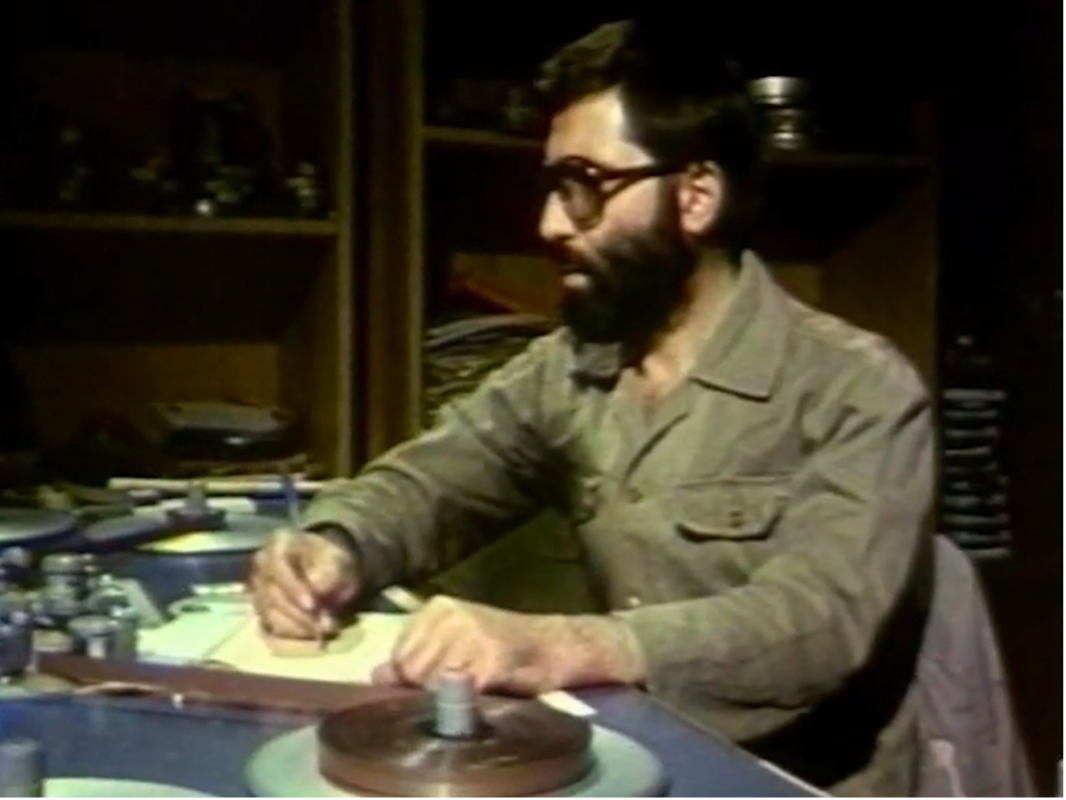
Figure 7: Avini at the editing table. Haghighat (Truth).
Directed by Morteza Avini, Construction Jihad, 1981-1982. Screenshot.
Editing Techniques
Avini edited all of his documentaries himself and on a Steenbeck. Being a trained architect, he considered editing to be “the architecture of cinema” (Ayene-ye 29 ( . As well as an important element in the structure of the film, Avini believed that the editing process provided the editor with spiritual qualities. He claimed that he learned philosophy through the act of editing his films (Ayene-ye). There are also reports from his companions that Avini positioned his editing table to face Qibla, the direction of Kaaba, which is the direction faced by Muslims when they pray (“Avini be”).
From the start of Chronicle of Triumph, Avini consciously refrained from operating with the speed that is often required from news reporters. He decided to dedicate a long enough time to the making of each episode such that the final result wasn’t yet another fast-paced news report but a documentary film with depth of content. In fact, he rarely used rapid cutting and preferred to let each shot take its time. As a result, the series has many long takes. Even the most dramatic and energetic situations at the battlefront would not convince Avini to use rapid cutting. Long tracking shots, with the camera repeatedly panning around in search of subjects, combined with long informal interviews gave the films a sense of “being there” that wouldn’t have been achieved with a fast-paced structure. However, on occasion Avini did use rapid cutting, but only when he did not intend to keep the geographical or temporal sense of continuity. For instance, in “Boo-ye Nan-e Roosta”(“The Aroma of Rustic Bread”),he used rapid cutting to draw the analogy between the contribution of villager women baking bread to be sent to the front and the volunteers themselves fighting at the front. The symbolic cross-cutting between the two events points to the notion that the supportive act of those women in a remote village is as valuable as the fighting of the volunteers.
Figure 8: Cross-cutting between bread-baking women in a village and volunteer fighters at the frontline of the war in “Boo-ye Nan-e Roosta” (“The Aroma of Rustic Bread”). Chronicle of Triumph. Screenshot.
Avini argued that in order to prevent the audience from falling under the magic spell of cinema, which in his eyes caused negligence of God, the editing process must be visible for them (Ayene-ye). Since a previous war documentary series called Haghighat (Truth, 1981-1982), Avini had started to include shots of himself behind the Steenbeck editing the film, reviewing the rushes, and writing the narration. He followed this style in Chronicle of Triumph with the exception that his face could no longer be seen. Agnès Devictor notes that Avini used such shots and scenes as staging devices to break the linear chain of time that was characteristic of TV newsreels of war (163). By incorporating this staging device, he managed to edit his narratives using scenes from various locations and times. This, Devictor points out, led to different experiences of temporality, allowing spectators to create a more complex relationship with what they were watching on the television (166-67).
While some episodes of Chronicle of Triumph follow a simple, linear narrative(“Derakhshesh-i Digar” 1, 2, 3 and 4), in many other episodes Avini intentionally breaks this linear narrative in order to present a different image of the war. Between shooting the scenes and having the films aired on television, Avini had time to focus on individual fighters and to follow them back to their hometown when they were on leave. For instance, in the last part of “Yadi az Se Delbakhteh” (“Remembering Three Enamoured”), the narrative moves between four different times and three different locations. We first see Avini behind the Steenbeck looking at the footage from a previous episode where an elderly volunteer, Mr Mollazadeh, is being interviewed at the frontline. Through a match cut we are taken to the frontline. The film then follows Mollazadeh back to his village during the harvest season. We are informed of his “martyrdom” before being taken back to the village again, this time after his “martyrdom”, when his son recounts his memories of Mollazadeh and his dedication to the war. The next scene is of Avini, who is looking at the footage of Mollazadeh at the front. Another match cut takes us back to the frontline, where the film ends. As is usually the case, the film does not end with the death of the “martyr” in focus, but rather with an image of him smiling and reciting poetry at the battlefront (“Yadi az Se Delbakhteh”).
Figure 9: Avini behind the Steenbeck looking at the footage of Mr Mollazadeh in “Yadi az Se Delbakhteh”. Chronicle of Triumph. Screenshot.
So, by focusing on one volunteer and following him to the future, Avini creates a space in time and geography where he can reflect on the motivations and the ideology behind the war and allow his characters to do the same. The film then returns to the front again, following another seminary student. In “Yadi az Se Delbakhteh” the jump is over seven years, while in “Do Sal Ghabl” [“Two Years Ago”], we go back and forth between the present time and that of precisely two years earlier. We see a road engineering project in the middle of a large palm grove prior to a major operation, before seeing scenes of volunteers two years later, just before an operation at the same location. Avini’s narration, over a tracking shot of a road under construction, is worth noting here due to his approach towards the concept of time:
Two years is nothing in the scheme of history, and you know that it is for us, the captives of time, that time passes. Otherwise, in the presence of the one who surpasses time and place [la-zaman va la-makan], yesterday and today and tomorrow are present at once, and it is for the sake of our progress that he has provided us with this arena of time. These palm groves are now empty, but if you pay attention, in this silence that sits heavily on the soul of the palm grove, [...] you will hear the laughter and crying of the vanguards of light who will gather here in two years and a few months. (“Do Sal”; my trans.)
By employing such nonlinear editing techniques, Avini tried to represent the battle fought by the Iranian fighters as that eternal move towards Noor al-anvar (“light of lights”), as a divine event that had been reverberating through history, and which will continue to reverberate even if our limited eyes cannot see it.
Apart from the fighters, the civilians/families of the martyrs, and the crew who are portrayed in a divine light, the audience is also addressed as a believer in the cause. The scenes in which families of the “martyrs” are shown watching the series on television is an indication of the type of audience to which Avini spoke. He insisted that he made his documentaries for people who believed in the rightfulness of the Islamic Republic (Ayene-ye). As Hamid Naficy argues, it was this “promotion of multiple sacred subjectivities” that made Chronicle of Triumph stand out among all other audiovisual productions about the war (20-21). “Orooj” (“Ascension”) is a good example for this audiovisual “promotion of multiple sacred subjectivities” and how it is achieved through editing. The episode is a cross-cut between the day of an operation during which a fighter called Ali Akbar Rahmanian was killed, and the day that footage was aired on TV. His family watch his footage on their television. A framed picture of him which is decorated with flowers is placed near the TV set. Avini’s narration accompanies these scenes; he reflects on the footage from a filmmaker’s perspective and mentions that he wishes he took more close-ups of the face of the “martyr”. He also reflects on the difficulty of having a camera pointed at the family of the “martyr” and how it “prevents them from naturally shedding tears” (“Orooj”). There are several match cuts between the actual footage of the operation and its televised version. During the operation, the film crew are visibly in danger. They run around with the fighters, under heavy machine gun fire. A fighter is hit with shrapnel and dies on camera. In the house, between three women covered in black chador, the infant son of the “martyr” sits, with pacifier in his mouth. Avini’s narration states that “he is one of the small soldiers of the Twelfth Imam, who is already preparing himself for an epic future” (“Orooj”).
While both Avini and Madadpour use mystic and Sufi jargon and insist on the possibility of representing spirituality via the medium of film, it is difficult to see their argument as anything but an argument for war propaganda. This is evident in the distinction they make between Kiyanoush Ayari’s Abadani-ha and Ebrahim Hatamikia’s Deedeh-ban.The first was a film inspired by Italian neorealism and specifically Bicycle Thieves (Ladri di biciclette, Vittorio De Sica, 1948) which attempted to depict the dark social reality of the Iran-Iraq War, while the second was a glorification of “martyrdom” in line with the regime’s war effort.
Figure 10: Family of a “martyr” watching their “martyr” appearing in “Orooj” (“Ascension”).
Chronicle of Triumph. Screenshot.
Conclusion
In conclusion, although Avini never managed to give a detailed account of his proposed Illuminationist cinema, through a careful review of his works, five main characteristics can be identified: first, showing the filmmaking process and the crew during shooting and editing; second, acknowledging the subjective presence of the camera; third, interaction with the audience by including them in the film or inviting them to action; fourth, nonlinear narrative; fifth, subjective first-person essayistic narration. By the time Avini made Chronicle of Triumph none of these above filmmaking tactics were anything new in film history. Dziga Vertov had already experimented and theorised the inclusion of the filmmaking process in the final film, a mode of representation dubbed by Bill Nichols as reflexive documentary (110). The subjective presence of the camera had already been rigorously discussed by Jean Rouch especially through his film with Edgard Morin Chronicle of a Summer (Chronique d’un été, 1961) and had already found a solid place in filmmaking trends around the world. The audience had already been called to action during the Latin American Third Cinema as well as in many other films before and after that. Numerous filmmakers had experimented with nonlinear narrative structures, including in Hollywood, and essayistic narrations too had been used by the likes of Chris Marker. It is not certain how much Avini was aware of these filmmaking trends. It is evident that at least a handful of books and articles had been published in Iran that included detailed information about Vertov, Rouch, Third Cinema, Godard, and more. however, Avini never mentioned any such influence. One can argue that Avini refrained from speaking about such influences because he claimed he was on a path to create a new kind of cinema detached from “the West”-and perhaps even against it. After all, he was a staunch critic of the intellectuals he called “West-struck”.
Nonetheless, it can also be argued that the similarities between Avini’s works and those of previous European and Latin American filmmakers were not due to direct influence. While European and Latin American filmmaking techniques and film movements were introduced and discussed inside Iran, it cannot be certain that Avini had watched those films; indeed, they were not widely available in Iran, if at all. In fact, it is more probable that Avini had not watched those films even if he had heard of them. Whether admitted or not by Avini, and no matter how important these influences were in the development of his filmic language, he applied them to a very different agenda, creating war propaganda for an Islamic state that at least in rhetoric opposed and oppressed Western influences, especially the left-wing kinds. So, what can complete the definition of Illuminationist cinema is this specific ideological approach. In other words, Avini’s filmmaking techniques can only constitute Illuminationist cinema when combined with his idea of “truth”; however, as discussed earlier, his idea of “truth” was unquestionably attached to his idea of the supreme guardian-Khomeini. He also seemed to be very much attached to the ideals of the war, so much so that after the war he continued to make documentaries about the war and its aftermath, until his eventual death by a landmine in 1993. He never managed to make another film as influential as Chronicle of Triumph, and he was aware of it. Using mystic terminology, he later described the war years as a time of drunkenness (Sokr) in contrast to the post-war feeling of awareness (Sahv). He believed that that “spiritual drunkenness” came to an end with the end of the war and the death of Khomeini, “that wondrous celestial human”, in 1989, shortly after the war (“Yek Tajrobe-ye” 247). Although this might sound like self-justificaton from a filmmaker who had passed the peak of his career, it in fact can give a hint as to why Avini’s followers remained confused about Illuminationist cinema. Perhaps with the end of the war and the downfall of the idealistic and apocalyptic ideology of the war as the last battle of history, Avini’s idea of “truth” also lost its meaning, and accordingly, Illuminationist cinema became a loaded word devoid of a solid base.
Note
[1] The seven were: Mohammad Ali Talebi; Hassan Hadi; Abolghasem Abouzari; Reza Moradi-nasab; Amir Eskandar Yekkeh-taz; Behrouz Felahat-pour; Mohammad Saeed Yazdan-parast.
References
1. Abadani-ha [The Abadanis]. Directed by Kiyanoush Ayari, Farabi Cinema Foundation, 1994.
2. Ajoudani, Mashallah. Mashrute-ye Irani [Iranian Constitution Revolution]. Akhtaran, 2004.3. Al-Ahmad, Jalal. Occidentosis: A Plague from the West. Translated by R. Campbell, Mizan Press, 1984.
4. “Atraf-e Pol” [“Around the Bridge”]. Chronicle of Triumph, directed by Morteza Avini, season 3, episode 3, Jihad Television, 1. 1986-1988.
5.“Avini be Mokhatabash Doroogh Nemigoft”[“Avini Did Not Lie to His Audience”]. Mashregh News, 10 Apr. 2011, www.mashreghnews.ir/news/38717/آويني-به-مخاطبش-دروغ-نمي-گفت.
6. Avini, Morteza. Ayene-ye Jadoo [Magic Mirror].Vol. I, Vaahe, 2015.
7. ---. “Negahi Dobare be Revayat-e Fath [Another Look at Chronicle of Triumph]. Ketab-e Moghavemat 4. Summer 1991.” Ayene-ye Jadoo [Magic Mirror],vol. III, Vaahe, 2015, pp. 197-224.
8. ---. “Sinama, Teknolozhy va Sakhtar-e Hoviyati Bara-ye Ensan-e No [Cinema, Technology, and Identity Structure for the New Man]. Film Magazine (123), 1992.” Ayene-ye Jadoo [Magic Mirror],vol. III, Vaahe, 2015, pp. 119-80.
9. ---. “Vaghe’iyat dar Sinama-ye Mostanad [Reality in Documentary Cinema]. Soureh Magazine (12), 1990.” Ayene-ye Jadoo [Magic Mirror], vol. III, Vaahe, 2015, pp. 225-40.
10. ---. “Yek Tajrobe-ye Mandegar [A Lasting Experience]. Film Magazine. Issue 132, 1992.” Ayene-ye Jadoo [Magic Mirror],vol. III, Vaahe, 2015, pp. 241-64.
11. “Be Su-ye Ma’shoogh” [“Towards the Beloved”]; “The Quran Gate” [“Darvazeh Ghor’an”]. Chronicle of Triumph, Directed by Morteza Avini, season 2, episode 2, Jihad Television, 1986-1988.
12. Bicycle Thieves [Ladri di biciclette]. Directed by Vittorio De Sica, Produzioni De Sica, 1948.
13. “Boo-ye Nan-e Roosta” [“The Aroma of Rustic Bread”]. Chronicle of Triumph, Directed by Morteza Avini, season1, episode 11, Jihad Television, 1986-1988.
14. Chronicle of a Summer [Chronique d’un été]. Directed by Jean Rouch and Edgar Morin, Argos Films, 1961.
15. Dabashi, Hamid. “Foreword.” Iranian Sacred Defence Cinema: Religion, Martyrdom and National Identity, edited by Pedram Khosronejad, Sean Kingston Publishing, 2012, pp. V-VII.
16. Dalai, Mostafa. “Ba Revayat-e Fath Mortezai Shodim [With Chronicle of Triumph We Fell in Love with Morteza].” Encyclopaedia of Iran’s Films of the War and Defence, edited by Massoud Ferassati, Saghi, 2013, pp. 471-78.
17. Deedeh-ban [The Scout]. Directed by Ebrahim Hatamikia, Farabi Cinema Foundation, 1990.
18. “Derakhshesh-i Digar 1” [“Another Sparkle 1”]. Chronicle of Triumph, directed by Morteza Avini, season 5, episode 10, Jihad Television, 1986-1988.
19. “Derakhshesh-i Digar 2” [“Another Sparkle 2”]. Chronicle of Triumph, directed by Morteza Avini, season 5, episode 11, Jihad Television, 1986-1988.
20. “Derakhshesh-i Digar 3” [“Another Sparkle 3”]. Chronicle of Triumph, directed by Morteza Avini, season 5, episode 12, Jihad Television, 1986-1988.
21. “Derakhshesh-i Digar 4” [“Another Sparkle 4”]. Chronicle of Triumph, directed by Morteza Avini, season 5, episode 13, Jihad Television, 1986-1988.
22. “Do Sal Ghabl” [“Two Years Ago”]. Chronicle of Triumph, Directed by Morteza Avini, season 1, episode 4, Jihad Television, 1986-1988.
23. Devictor, Agnès. “How Can Faith Be Filmed on the Battlefront and Experienced by TV Spectators?” Iranian Sacred Defence Cinema: Religion, Martyrdom and National Identity, edited by Pedram Khosronejad, Sean Kingston Publishing, 2012, pp. 161-73.
24. “Golestan-e Atash” [“The Garden of Fire”]. Chronicle of Triumph, Directed by Morteza Avini, season 5, episode 9, Jihad Television, 1986-1988.
25. Haghighat [Truth]. Directed by Morteza Avini, Construction Jihad, 1981-1982.
26. “Hanabandan” [“Henna Ceremony”]. Chronicle of Triumph, directed by Morteza Avini, Season 2, episode 1, Jihad Television, 2. 1986-1988.
27. “Hezbollah” [“Party of Allah”]. Chronicle of Triumph, directed by Morteza Avini, season 1, episode 5, Jihad Television, 1986-1988.
28. Josteju II [Search II]. Directed by Amir Naderi, I.R.I.B., 1981.
29. Kino-pravda. Directed by Dziga Vertov, 1922-1925.
30. McLuhan, Marshall. Understanding Media: The Extensions of Man. Routledge & Kegan Paul, 1964.
31. Madadpour, Mohammad. Seyr va Solook-e Sinamayi [Cinematic Spiritual Journey]. Barg Publication, 1997.
32. ---. Sinama-ye Eshraghi [Illuminationist Cinema]. Soureh Mehr, 2005.
33. Marcotte, Roxanne. “Suhrawardi.” Stanford Encyclopaedia of Philosophy, 2007-2019, plato.stanford.edu/entries/suhrawardi. Accessed 25 Mar. 2021.
34. Naficy, Hamid. A Social History of Iranian Cinema.Vol. 4, Duke UP, 2012.
35. Nichols, Bill. Introduction to Documentary. Indiana UP, 2017.
36. “Orooj” [“Ascension”]. Chronicle of Triumph, directed by Morteza Avini, Season 1, episode 7, Jihad Television, 1986-1988.
37. “Patak-e Rooz-e Chaharom” [“The Counterattack of the Fourth Day”]. Chronicle of Triumph, directed by Morteza Avini, season 1, episode 2, Jihad Television, 1986-1988.
38. “Payam-e Amir va Yadegar-e Hassan” [“Amir’s Message and Hassan’s Commemoration”]. Chronicle of Triumph, directed by Morteza Avini, season 3, episode 13, Jihad Television, 1986-1988.
39. Rastegar, Kamran. Surviving Images: Cinema, War, and Cultural Memory in the Middle East. Oxford UP, 2015.
40. Revayat-e Fath [Chronicle of Triumph]. Directed by Morteza Avini, Jihad Television, 1986-1988.
41. “Sadeghieh.” Chronicle of Triumph, directed by Morteza Avini, season 4, episode 4, Jihad Television, 1986-1988.
42. “Shab-e Ashurai” [“Ashura-like Night”]. Chronicle of Triumph, directed by Morteza Avini, season 1, episode 1, Jihad Television, 1986-1988.
43. Varzi, Roxanne. Warring Souls: Youth, Media, and Martyrdom in Post-revolution Iran. Duke UP, 2006.
44. “Yadi az Gozashteha-ye Jang” [“Remembering War’s Past”]. Chronicle of Triumph, directed by Morteza Avini, season 4, episode 6, Jihad Television, 1986-1988.
45. “Yadi az Se Delbakhteh” [“Remembering Three Enamoured”]. Chronicle of Triumph, directed by Morteza Avini, season 3, episode 12, Jihad Television, 1986-1988.
Suggested Citation
Abbasian, Kaveh. “Illuminationist Cinema: How Islamic Mysticism Inspired Morteza Avini’s Sacred Defence Documentaries of the Iran-Iraq War and His Attempt at Constructing a Film Theory.” Alphaville: Journal of Film and Screen Media, no. 25, 2023, pp. 5-23. DOI: https://doi.org/10.33178/alpha.25.01
Kaveh Abbasian is a filmmaker and lecturer in film and media practice at the University of Kent, UK. In 2019, he completed his practice-based PhD project at Roehampton University of London. His research was titled Chronicle of Triumph: Iranian National Identity and Revolutionary Shi’ism in Morteza Avini’s Sacred Defence Documentaries. His most recent feature-length film, Triumph (2022), is an essay documentary about the contrasting narratives of the contemporary history of Iran since the 1979 Revolution. His research extends to Iranian sacred defence cinema, Kurdish cinema, refugee and exilic filmmaking, and nationalism and national identity in Iranian cinema.





